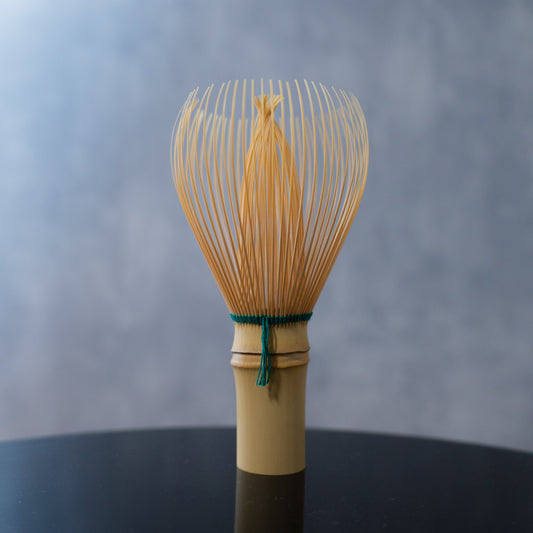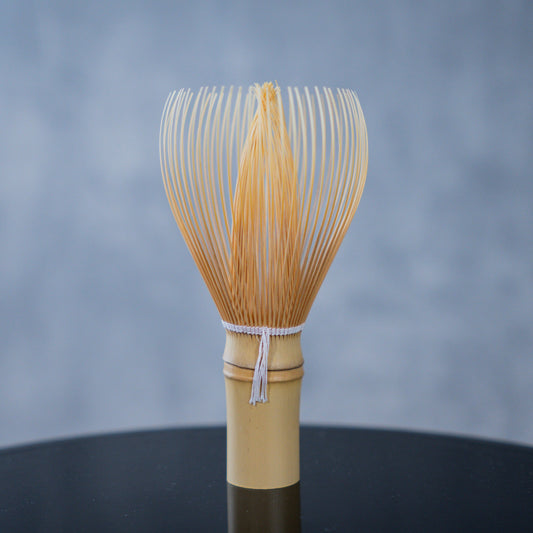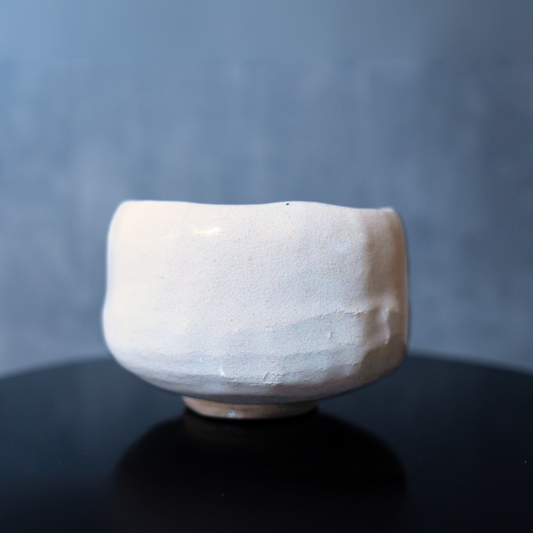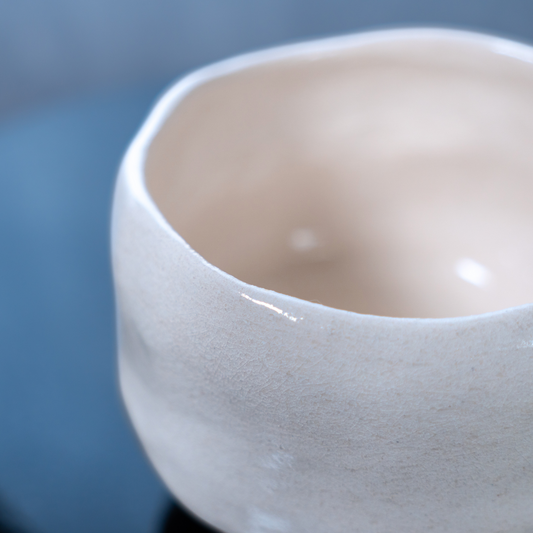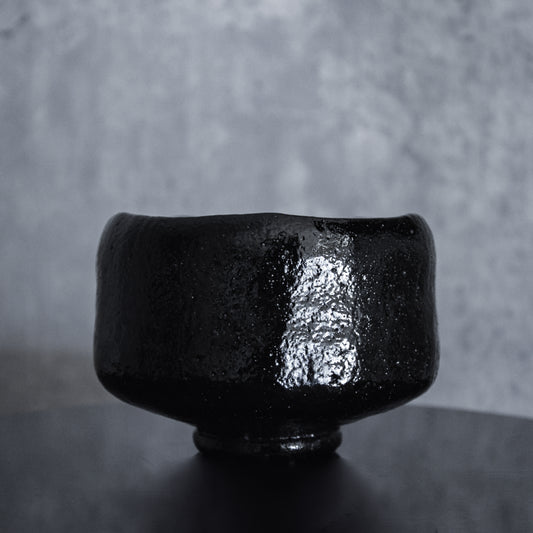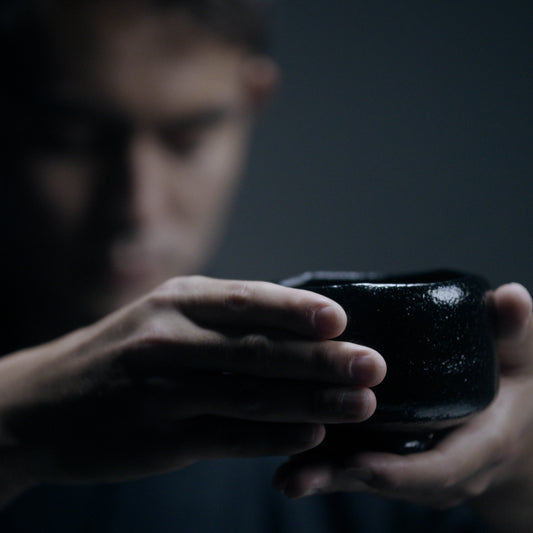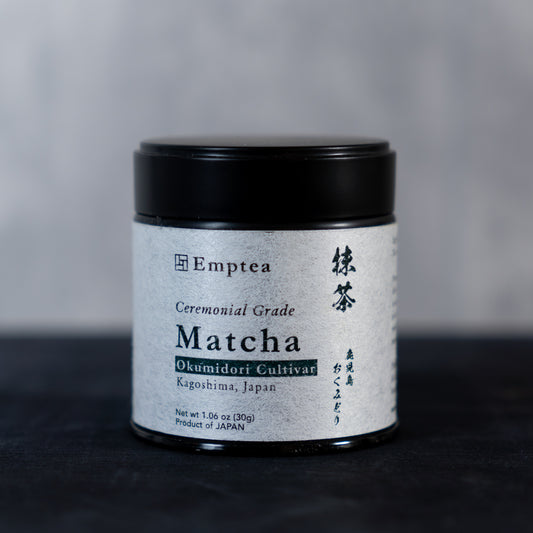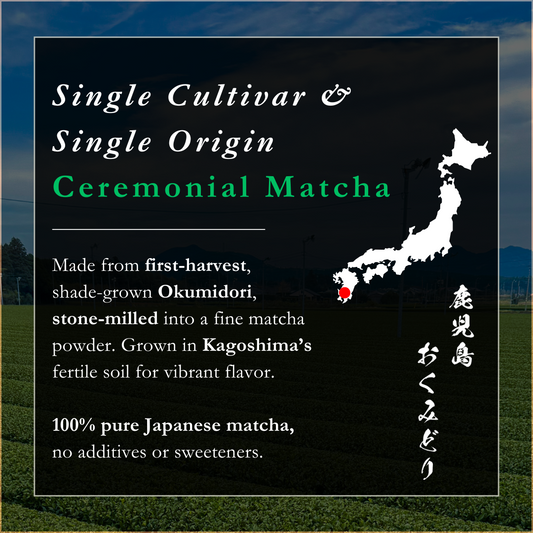While most Japanese green teas are known for their vibrant emerald hue and grassy flavor profiles, hojicha breaks the mold with its distinctive reddish-brown color and toasty, nutty, caramel-like aroma. This unique Japanese tea is still part of the green tea family but undergoes a special roasting process that transforms both its appearance and character.
What is Hojicha?
Hojicha (ほうじ茶, 焙じ茶) is a roasted Japanese green tea created by applying high heat to bancha (a late-harvest green tea), sencha leaves, or kukicha (twig tea). The roasting process takes place in a porcelain pot over charcoal, although modern commercial methods might use rotating drums. This roasting:
- Transforms the tea's color from green to reddish-brown
- Changes the flavor from grassy to nutty, toasty, and slightly sweet with chocolaty undertones
- Reduces caffeine content, making it suitable for evening consumption
- Creates a soothing, warming beverage with less astringency than other green teas
Available Formats: Loose Leaf vs. Powder
Loose Leaf Hojicha
- Traditional format in Japan
- Prepared using teapots (kyusu/急須)
- Common in Japanese households
- Provides a more layered flavor experience
- Can be reinfused multiple times
Hojicha Powder
- Gaining popularity in Western countries
- Compatible with existing matcha tools (chasen/whisk)
- Growing in popularity due to its versatility
- Ideal for lattes, baking, and culinary applications
- Offers a more concentrated flavor
- Appeals to those already familiar with matcha preparation
Hojicha vs. Other Japanese Green Teas
Hojicha vs. Matcha
- Growing conditions: Unlike matcha, hojicha leaves are grown in full sunlight (similar to sencha), not shaded before harvest
- Processing: Matcha is stone-ground into powder before use; hojicha is roasted after initial processing
- Caffeine content: Hojicha contains significantly less caffeine (7-8mg per cup) than matcha (50-70mg per cup)
- Flavor profile: Matcha is vegetal and umami-rich; hojicha is nutty, toasty, and chocolaty
- Color: Matcha is vibrant green; hojicha is reddish-brown
- Ideal consumption time: Matcha is energizing and best for morning/afternoon; hojicha is relaxing and suitable for evening
Hojicha vs. Sencha
- Processing: Sencha is steamed and dried; hojicha is additionally roasted after initial processing
- Caffeine content: Hojicha contains less caffeine (7-8mg) than sencha (20-30mg)
- Flavor profile: Sencha is fresh and grassy; hojicha is roasted and caramel-like
- Color: Sencha brews green; hojicha brews amber to reddish-brown
- Seasonality: Sencha is often associated with spring/summer; hojicha with autumn/winter
The History and Cultural Significance
Hojicha originated in Kyoto in the 1920s when tea merchants began roasting leftover tea leaves and stems to extend their shelf life and create a new product. This practical innovation soon became popular throughout Japan for its distinctive flavor and lower caffeine content.
Today, hojicha is often served:
- After meals, especially dinner
- In the evening due to its lower caffeine content
- During colder months when its warm, toasty notes are particularly comforting
- To visitors in Japanese homes as a sign of hospitality
How to Prepare a Hojicha Powder Latte
Hojicha lattes have become increasingly popular for their creamy texture and comforting, nutty flavor profile. The combination of roasted tea with milk creates a delicious alternative to coffee-based lattes.
What You'll Need:
- 3g hojicha powder (approximately 3 scoops if using a standard tea scoop)
- 40ml (1.3oz) hot water at 80°C (176°F)
- Bamboo whisk (chasen) or small electric frother
- Your preferred milk (dairy or plant-based)
- Sweetener (optional)
- Tall glass or mug
Step-by-Step Instructions:
- Measure the powder: Add 3g of hojicha powder to your preparation bowl or cup.
- Add hot water: Pour 40ml of water at 80°C (176°F) over the powder. The slightly lower temperature than for traditional brewing helps create a smoother latte base.
- Whisk properly: Using a bamboo whisk that has been softened in warm water, whisk the mixture vertically with a rhythmic motion. Focus on quick, short strokes with a slight "snap" of the wrist until the mixture becomes frothy. This vertical whisking technique is different from the zigzag motion often used for matcha.
- Prepare your milk: While you can use any type of milk, warming it slightly will create a better flavor fusion with the hojicha.
- Combine thoughtfully: Pour your hojicha mixture into a tall glass or mug, then slowly add your milk. The slow pour helps maintain the frothy texture.
- Stir and customize: Gently stir to combine the layers if desired. Add sweetener according to your preference – honey and maple syrup complement hojicha's roasted notes particularly well.
- Enjoy immediately: Savor the combination of creamy milk with the toasty, nutty flavor of hojicha.
Tips for the Perfect Hojicha Latte:
- Temperature matters: Using water at 80°C (rather than boiling) creates a smoother base without bitterness
- Whisking technique: The vertical, rhythmic whisking creates the ideal frothy texture
- Milk selection: Oat milk and almond milk are popular non-dairy options that complement hojicha's roasted profile
- Flavor variations: Try adding a dash of cinnamon, vanilla extract, or cocoa powder for interesting flavor combinations
- Iced option: For an iced hojicha latte, prepare as above but pour over ice after combining with cold milk
Brewing the Perfect Cup of Hojicha (Loose Leaf)
What You'll Need:
- Hojicha tea leaves (2-3 grams or about 1 tablespoon per cup)
- Freshly drawn water
- A teapot (preferably ceramic or glass)
- A thermometer (optional)
- A timer
- Teacups for serving
Step-by-Step Brewing Instructions:
- Heat your water: Unlike delicate green teas that require lower temperatures, hojicha benefits from hotter water, about 90-100°C (194-212°F). This higher temperature helps extract the rich, roasted flavors.
- Warm your teapot: Pour some hot water into your teapot and cups, swirl it around, and then discard. This preheating helps maintain the proper brewing temperature.
- Add the tea leaves and pour water: Place 2-3 grams of hojicha per cup into your warmed teapot. Pour the hot water directly onto the tea leaves to ensure they're fully submerged. This is important for both even brewing and safety – floating leaves can cause hot water to overflow when the lid is placed.
- Let steep without the lid for 30 seconds: This is a crucial step for hojicha! Leave the teapot uncovered initially to allow the steam to carry away any burnt or smoky notes that can develop during the roasting process. Take this moment to enjoy the rising aroma of toasted nuts and caramel.
- Cover and pour: After the initial open steeping, place the lid on the teapot and pour the tea into cups. When handling the hot teapot, hold it from the side opposite the spout to avoid burning your fingers, as hojicha is brewed at high temperatures.
- For multiple servings: If serving two people, a helpful technique is to combine the first and second infusions. Pour half of the first infusion into each cup, then immediately prepare a second infusion (steeping for just 20 seconds) and distribute it. This creates a balanced flavor in both cups.
- For subsequent infusions: For the second brewing, use water that's just as hot as the first infusion but reduce steeping time to about 20 seconds. Hojicha can typically be steeped 2-3 times, with each infusion offering slightly different flavor nuances.
Special Brewing Tips:
- Water temperature matters: Always use very hot water (90-100°C) for hojicha, unlike other green teas that require cooler water.
- The lidless first steep: The initial steeping without a lid is unique to hojicha and helps improve its aroma.
- Quick steeping time: Hojicha releases its flavors quickly, so avoid over-steeping.
- Hold the teapot correctly: Due to the high water temperature, be careful when handling the teapot.
- Even distribution: For multiple servings, the mixing technique ensures everyone gets a similar flavor experience.
Flavor Profile and What to Expect
When brewed correctly, hojicha offers:
- A beautiful amber to reddish-brown color.
- A warm, toasty aroma reminiscent of roasted nuts, chocolate, coffee, and caramel.
- A smooth, rounded flavor with notes of roasted barley, caramel, and sometimes a hint of dark chocolate.
- Very little astringency or bitterness compared to other green teas.
- A comforting, warming quality that soothes the palate.
Varieties of Hojicha
While all hojicha is roasted green tea, there are several varieties based on the base tea used:
- Bancha Hojicha: Made from roasted bancha, a late-harvest, coarser tea. This is the most common type.
- Sencha Hojicha: Made from roasted sencha, resulting in a slightly more refined flavor.
- Kukicha Hojicha: Made from roasted stems and twigs, offering a lighter, sweeter flavor.
- Dark Roast Hojicha: Roasted longer for a deeper color and more intense roasted flavor.
- Light Roast Hojicha: Roasted for less time, maintaining some green tea characteristics while adding roasted notes.
Pairing Suggestions
Hojicha pairs wonderfully with:
- Traditional Japanese wagashi (sweets), especially those containing red bean paste.
- Chocolate and caramel desserts.
- Nuts and nut-based cookies.
- Savory snacks like rice crackers.
- Light meals, especially those featuring grilled or roasted ingredients.
Health Benefits
While the roasting process reduces the catechin content compared to other green teas, hojicha still offers several health benefits:
- Lower caffeine content (about 7-8mg per cup compared to 20-30mg in regular green tea and 50-70mg in matcha).
- Antioxidant properties.
- Potential digestive benefits.
- Relaxing properties, making it suitable for evening consumption.
- Contains L-theanine, which can promote relaxation without drowsiness.
When to Drink Hojicha
The low caffeine content and comforting profile make hojicha ideal for:
- Evening relaxation, unlike more caffeinated teas.
- After meals, as a digestif.
- During colder months, when its warm, toasty notes are particularly welcome.
- Any time you want the comfort of tea without the stimulating effects.
Disclaimer: While hojicha has low caffeine, it is still advised that pregnant women and children avoid caffeine or consume it in moderation due to potential health concerns.
Storing Your Hojicha
To maintain hojicha's freshness:
- Store in an airtight container, away from light, moisture, and strong odors.
- Keep at room temperature, rather than refrigerating.
Hojicha Pairings
- Chocolate: Dark chocolate, truffles, or chocolate-covered nuts complement hojicha’s roasted flavor.
- Pastries and Cakes: Soft pastries like madeleines, shortbread, or sponge cakes enhance the smoothness of hojicha.
- Cheese: Mild cheeses like brie or cream cheese balance nicely with hojicha’s toasty taste.
- Nuts and Dried Fruits: Roasted almonds, cashews, or dried fruits like apricots and figs pair well.
- Japanese Sweets (Wagashi): Traditional sweets like dorayaki, yokan, or matcha-flavored mochi go wonderfully with hojicha.
Final Thoughts
Hojicha offers a gateway into Japanese tea culture that differs substantially from the grassy, vegetal profile many associate with Japanese green teas.
Its approachable, nutty, chocolaty flavor profile and lower caffeine content make it perfect for tea novices and connoisseurs alike. Whether you're seeking a comforting evening beverage, looking to expand your tea repertoire, or simply curious about the diverse world of Japanese teas, hojicha deserves a special place in your tea collection.
Its transformation from green to amber-brown is a beautiful reminder of how traditional techniques can create entirely new sensory experiences from familiar ingredients.
Shop on Amazon US



